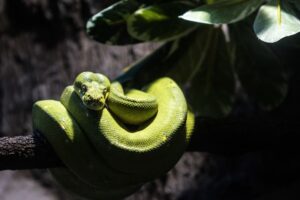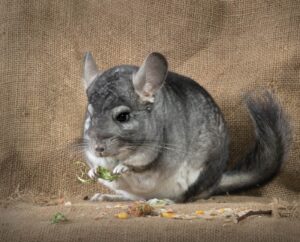Table of Contents
ToggleIntroduction

Nestled within the woodlands and diverse ecosystems of Connecticut, a fascinating and often elusive resident graces the treetops—the Flying Squirrel. Flying Squirrels Connecticut? Despite their name, these small, nocturnal mammals don’t truly fly but rather glide effortlessly between trees using a specialized membrane called the patagium. Flying Squirrels in Connecticut contribute to the region’s rich biodiversity and captivate observers with their acrobatic nocturnal antics. In this exploration, we unravel the mysteries surrounding the Flying Squirrels of Connecticut, delving into their habits, and the unique role they play in the enchanting natural tapestry of the state.
Species Of Flying Squirrels In Connecticut
Connecticut’s woodlands come alive after dusk, and among the canopy-dwelling inhabitants, two species of Flying Squirrels add a touch of nocturnal enchantment to the state’s ecosystems.
Northern Flying Squirrel (Glaucomys sabrinus)
The Northern Flying Squirrel, distinguished by its soft, dense fur and large eyes, is a native resident of Connecticut’s forests. Its bushy tail, wide patagium (the membrane that allows gliding), and relatively small size make it an adept navigator through the treetops. With a preference for coniferous and mixed woodlands. These squirrels find refuge in tree cavities during the day. Emerging at night to forage for seeds, nuts, fungi, and insects. The Northern Flying Squirrel’s presence in Connecticut signifies the health of the state’s diverse woodlands. Where it contributes to seed dispersal and plays a role in maintaining the delicate ecological balance.
Southern Flying Squirrel (Glaucomys volans)
The Southern Flying Squirrel, a smaller counterpart to its northern relative, also calls Connecticut home. Recognizable by its large, dark eyes and velvety fur, this species is adaptable to various habitats, including deciduous and mixed forests. Like its northern counterpart, the Southern Flying Squirrel is an adept glider. Covering distances of up to 150 feet in a single glide. Its diet consists of a variety of seeds, fruits, and insects, and it plays a crucial role in shaping the biodiversity of Connecticut’s woodlands. The Southern Flying Squirrel’s nocturnal habits make it a discreet yet essential contributor to the state’s ecosystems.
Distinctive Features and Characteristics
Both species of Flying Squirrels share common characteristics that make them unique and well-adapted to their arboreal lifestyles. Their large, expressive eyes provide excellent night vision, facilitating their nocturnal activities. The most distinctive feature is the patagium—a stretch of skin extending between their front and hind limbs. Allowing them to glide effortlessly from tree to tree.
Habitat And Range Of Flying Squirrels In Connecticut
Woodland Environments:
Flying Squirrels in Connecticut find their true haven in the lush embrace of woodland environments. These arboreal creatures thrive in deciduous and mixed forests, where the abundance of trees provides. An intricate network of branches and trunks—a perfect playground for their gliding escapades. Woodlands offer not only an ample supply of nuts, seeds, and fungi. But also an array of tree cavities for nesting and shelter during daylight hours. The dense canopy, rich biodiversity, and interconnected ecosystem of Connecticut’s woodlands create an ideal habitat for the Northern and Southern Flying Squirrels. Allowing them to navigate the treetops with grace and agility.
Urban Adaptability
Remarkably adaptable, Flying Squirrels in Connecticut have demonstrated a surprising ability to coexist with urban environments. As cities and suburbs encroach on natural habitats, these squirrels have exhibited a capacity to thrive in urban settings. Parks, green spaces, and even backyard gardens become extensions of their woodland homes. Urban trees, despite their limited natural cover, often provide sufficient refuge for these nocturnal gliders. The adaptability of Flying Squirrels to urban areas highlights their resilience in the face of human development. Emphasizing the need for responsible conservation practices that consider the coexistence of wildlife with expanding urban landscapes.
Geographic Distribution in Connecticut
Connecticut’s diverse geography and range of habitats contribute to the widespread distribution of Flying Squirrels across the state. Both the Northern and Southern Flying Squirrels have been documented in various regions, from the wooded hills of Litchfield County. To the coastal areas along Long Island Sound. The availability of suitable habitats, including deciduous and mixed forests, allows these squirrels to establish populations throughout the state. Observations and sightings of Flying Squirrels in suburban and urban areas further underscore their adaptability and ability to inhabit a variety of landscapes.
Nocturnal Behaviors And Adaptations Of Flying Squirrels In Connecticut
Nighttime Activities
As the sun sets over the woodlands of Connecticut, the Flying Squirrels come to life in the cover of darkness. Nocturnal by nature, these remarkable creatures exhibit a range of nighttime activities that distinguish them from their daily counterparts. Under the veil of night, Flying Squirrels engage in foraging expeditions. Utilizing their keen senses to locate and harvest a bounty of nuts, seeds, fruits, and insects. Their large, expressive eyes adapted for low-light conditions allow them to navigate the nocturnal landscape. While their agile movements enable them to explore the treetops with grace. Nighttime also serves as the setting for social interactions. As these squirrels communicate through soft chirps and engage in communal activities.
Specialized Gliding Abilities
One of the most captivating adaptations of Flying Squirrels lies in their specialized gliding abilities. Equipped with a patagium—a stretch of skin extending between their front and hind limbs. Flying Squirrels can effortlessly glide between trees, covering impressive distances. This unique adaptation allows them to access different parts of the forest canopy, evade predators, and efficiently search for food. Their gliding prowess is a testament to their evolutionary resilience and their ability to exploit the three-dimensional space of the forest during the nighttime hours. The silent and elegant flight of Flying Squirrels through the moonlit canopy adds a touch of enchantment to Connecticut’s nocturnal wilderness.
Role of Nocturnality in Survival
The nocturnal lifestyle of Flying Squirrels in Connecticut serves as a strategic adaptation that enhances their survival in the wild. By foraging and engaging in activities under the cover of darkness, these squirrels reduce their visibility to predators, which are often diurnal hunters. The cloak of night provides a level of protection and allows Flying Squirrels to exploit resources without the same level of competition they might face during the day. Additionally, their nocturnal behaviors align with the availability of certain food sources, such as insects and certain fruits, which peak in abundance during the nighttime hours. This synchronization with the natural rhythms of their environment enhances their chances of successful foraging and contributes to their overall survival.
Conclusion
In the nocturnal realm of Connecticut’s woodlands, the Flying Squirrel emerges as a charismatic and enigmatic creature, contributing to the state’s diverse tapestry of wildlife. As we conclude our exploration into the world of Flying Squirrels in Connecticut, we find ourselves marveling at the adaptability and resilience of these arboreal acrobats. Their ability to navigate the night skies, propelled by the delicate embrace of their patagium, adds a touch of magic to the state’s natural landscapes.
While often hidden from casual observers, the presence of Flying Squirrels serves as a reminder of the intricate interconnectedness of Connecticut’s ecosystems. These small, elusive mammals play a vital role in seed dispersal and contribute to the delicate balance of their woodland habitats.







